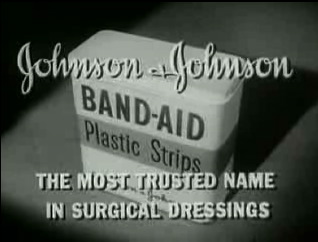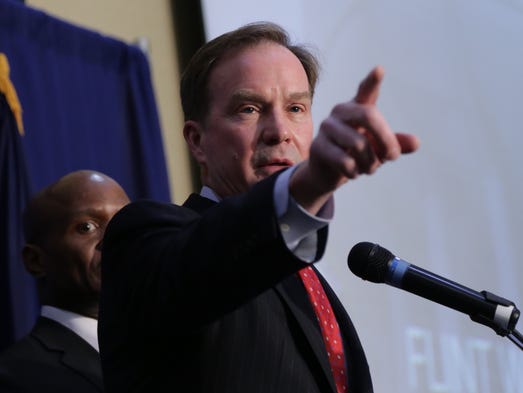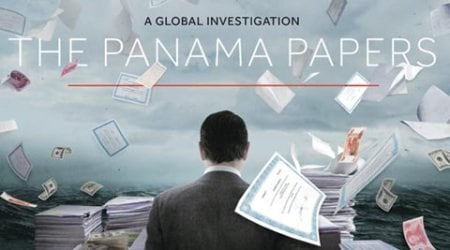 It is often forgotten that the Watergate scandal of the 1970s was not only about the misdeeds of the Nixon Administration. Investigations by the Senate and the Watergate Special Prosecutor forced companies such as 3M, American Airlines and Goodyear Tire & Rubber to admit that they or their executives had made illegal contributions to the infamous Committee to Re-Elect the President.
It is often forgotten that the Watergate scandal of the 1970s was not only about the misdeeds of the Nixon Administration. Investigations by the Senate and the Watergate Special Prosecutor forced companies such as 3M, American Airlines and Goodyear Tire & Rubber to admit that they or their executives had made illegal contributions to the infamous Committee to Re-Elect the President.
Subsequent inquiries into illegal payments of all kinds led to revelations that companies such as Lockheed, Northrop and Gulf Oil had engaged in widespread foreign bribery. Under pressure from the SEC, more than 150 publicly traded companies admitted that they had been involved in questionable overseas payments or outright bribes to obtain contracts from foreign governments. A 1976 tally by the Council on Economic Priorities found that more than $300 million in such payments had been disclosed in what some were calling “the Business Watergate.”
While some observers insisted that a certain amount of baksheesh was necessary to making deals in many parts of the world, Congress responded to the revelations by enacting the Foreign Corrupt Practices Act in 1977, making bribery of foreign government officials a criminal offense under U.S. law.
That laws is still on the books, and despite all the talk of corporate social responsibility, quite a few corporations still get caught in its net.
As part of the forthcoming expansion of the Violation Tracker database I produce with my colleagues at the Corporate Research Project of Good Jobs First, I’ve been looking at recent FCPA data and have been struck by the enduring inclination of businesspeople to engage in foreign bribery.
Since the beginning of 2010 about 90 companies have been hit with either criminal charges brought by the Justice Department or civil charges filed by the SEC or both. The 53 companies charged by the DOJ had to pay nearly $4 billion to settle their cases, while the 72 firms targeted by the SEC had to pay $1.7 billion.
The companies involved in the cases include some very familiar U.S. corporate names, including: Alcoa, General Electric, Goodyear, Johnson & Johnson, Pfizer, Ralph Lauren and Smith & Wesson.
Yet some of the biggest penalties have been paid by foreign companies such as the French conglomerate Alstom ($772 million), British military contractor BAE Systems ($400 million), Italian petroleum company ENI ($125 million) and German automaker Daimler ($91 million).
That reflects the long reach of the law, which allows for cases to be brought against foreign corporations involving corrupt practices in third countries. For example, the Japanese trading company Marubeni was charged with paying bribes to high-ranking government officials in Indonesia to secure a lucrative power project. Germany’s Deutsche Telekom and its Hungarian subsidiary Magyar Telecom were charged with making illegal payments in Macedonia and Montenegro.
From the time the FCPA was enacted, corporate lobbyists have complained about the law and have sought to have it weakened or repealed. The smarter companies have realized that the bribery rules are not going away and that they simply need to clean up their act when doing business abroad.
—————————-
Note: Violation Tracker 2.0 — which will add banking offenses and cases involving price-fixing, money laundering, defrauding of consumers and export-control/sanctions violations as well as foreign bribery — will be released on June 28.
 Conventional economists and the policymakers who follow their advice continue to insist that the market is an inevitable force to which we must all pay homage. Belief in the power of the “invisible hand” is used to justify all manner of conservative policies, including resistance to living wage ordinances.
Conventional economists and the policymakers who follow their advice continue to insist that the market is an inevitable force to which we must all pay homage. Belief in the power of the “invisible hand” is used to justify all manner of conservative policies, including resistance to living wage ordinances. Monsanto, one of the most controversial corporations in the United States, now finds itself the target of a takeover campaign by German pharmaceutical and chemical giant Bayer. Would a change in ownership improve the behavior of the biotechnology company dubbed “Mutanto” by its critics?
Monsanto, one of the most controversial corporations in the United States, now finds itself the target of a takeover campaign by German pharmaceutical and chemical giant Bayer. Would a change in ownership improve the behavior of the biotechnology company dubbed “Mutanto” by its critics? In submitting his new
In submitting his new Bring back manufacturing jobs: For years this has been put forth as the silver bullet that would reverse the decline in U.S. living standards and put the economy back on a fast track. The only problem is that today’s production positions are not our grandparents’ factory jobs. In fact, they are often as substandard as the much reviled McJobs of the service sector.
Bring back manufacturing jobs: For years this has been put forth as the silver bullet that would reverse the decline in U.S. living standards and put the economy back on a fast track. The only problem is that today’s production positions are not our grandparents’ factory jobs. In fact, they are often as substandard as the much reviled McJobs of the service sector. Baby powder, the product along with Band-Aids that for decades gave Johnson & Johnson a benign image, is now the latest symbol of its deterioration into one of the most unreliable of large corporations. Juries have recently awarded a total of $127 million to women with ovarian cancer who charge that their disease was caused by the talc in the company’s powder.
Baby powder, the product along with Band-Aids that for decades gave Johnson & Johnson a benign image, is now the latest symbol of its deterioration into one of the most unreliable of large corporations. Juries have recently awarded a total of $127 million to women with ovarian cancer who charge that their disease was caused by the talc in the company’s powder. Workers Memorial Day (April 28) is not one of those holidays on which to give thanks and feel good. It is a time to be angry about the fact that nearly 5,000 people each year are killed on the job in the United States in accidents that in many cases were the result of management negligence. Millions more are injured or contract occupational illnesses. The just-published 25th edition of the AFL-CIO’s Death on the Job annual
Workers Memorial Day (April 28) is not one of those holidays on which to give thanks and feel good. It is a time to be angry about the fact that nearly 5,000 people each year are killed on the job in the United States in accidents that in many cases were the result of management negligence. Millions more are injured or contract occupational illnesses. The just-published 25th edition of the AFL-CIO’s Death on the Job annual 
 The publication of the
The publication of the